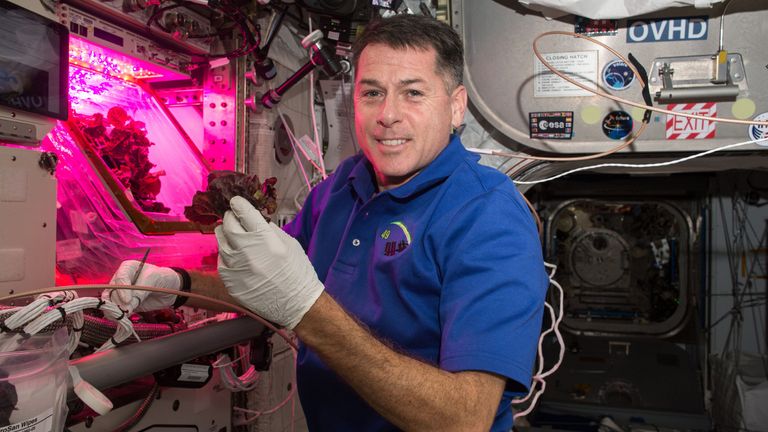Lettuce grown on the International Space Station (ISS) is just as nutritious as lettuce grown on Earth, according to NASA astronauts.
In a scientific study published in the journal Frontiers in Plant Science, the US space agency found that there were few differences in nutrients depending on where the lettuce was grown.
Space lettuce was quite similar to control samples grown on Earth, but some plants were actually richer in a number of elements, including potassium, sodium and zinc.
The crops had been grown in sealed units on board the ISS containing ceramic soil under special red lighting for 33 to 56 days and were sprayed by the astronauts through a tube.
After the plants had fully grown, the astronauts harvested them. Some were eaten while others were frozen or returned to Earth for analysis.
Higher levels of bacteria have been found on space grown crops, although this does not include dangerous types such as E. coli or salmonella.
Growing food in space is necessary for long-term space missions, potentially including the NASA crewed mission to Mars.
Normal prepackaged meals that astronauts typically receive in space rations that have been sterilized by heating, freeze-drying, or irradiation.
These processes are expensive, and if astronauts could eat food, they grew up themselves, so they could potentially survive in space at a much cheaper cost.
“The International Space Station serves as a test bed for future long-term missions,” said study co-author Dr. Gioia Massa, project scientist at the Kennedy Space Center.
“These types of crop growth tests help to broaden the range of candidates that can be grown effectively in microgravity.
“Future tests will study other types of leafy crops as well as berries such as pepper and tomatoes, to help provide additional fresh food for the astronaut diet,” she said.




